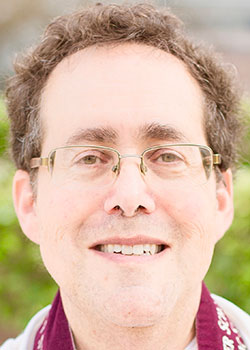Imagine the excitement in the air, as the Children of Israel gather around the newly-constructed sanctuary! The Mishkan (Tabernacle) is promised them as the central structure of their encampment, and God promises to be present from that place. All of the people come together to donate their jewelry, to contribute the wood, the gold, the yarn, the skins. Each person with artistic and practical skill joins in the labor, and the kohanim (priests) and levi’im (levites) are consecrated for holy service. Then, as all gather for the initiatory celebrations, Moses announces the good news, “Today the Holy One will appear to you.”
This is a curious promise — if God is incorporeal, if God is beyond all limitations and restrictions, then what can it possibly mean to see God? This perplexity is not merely the result of deep theology (recognizing the radical nature of God’s oneness), but comes from the Torah’s words itself. At the end of the celebration, when the divine presence consumes the sacrifice, we are again told, “Fire came forth from before the Holy One and consumed the burnt offering and the fat parts on the altar. And all the people saw, and shouted, and fell on their faces.” What did the people see? They saw the fire, and they saw the sacrifice consumed. And that’s as close as they get to seeing God! Yet they aren’t told they will see God’s acts, they are told they will see God.
Why?
Rashi (11th Century France) explains God’s appearance to mean “to rest God’s Shekhinah in the work of your hands.” God’s presence isn’t data that the eyes can see. It isn’t factual claims that the mind can analyze. What Rashi insists is that God’s appearance is through our emotions and our actions – God enters the world when we orient our lives in harmony with God’s presence, when we serve God by sanctifying creation, when we create meaning by living the mitzvot.
That same profound insight – preventing us from reducing God to a mere fact, a thing, forcing us to perceive God’s presence with our hearts, with our minds, with our deeds – animates Jewish faith through the ages. The great sage, Rambam (Moses Maimonides, 13th Century Egypt), cautions us that Biblical sightings are “prophetic visions and parables,” meant to teach us life lessons rather than create visual records. The philosopher/poet, Shlomo ibn Gabirol (11th Century Spain) tells God “You are light that is eternal. The intellect’s eye yearns for You and catches only glimmerings, Endless is the extent of Your vision but all of You cannot be seen (Keter Malkhut).”
Seeing God is not a physical activity. God is not a piece of information to be analyzed from some objective place, nor a proposition to be evaluated from the outside. These sources, and the Torah itself reminds us of what every believer knows – that God is the ground of our being, that there are values and commitments that emerge immediately from a relationship with the divine. We “know” God by being, through the mindful exultation of life itself. Perhaps that’s why the Israelites respond, not with doctrine or information, but with shouting and worship. They do not respond by quantifying, they respond with their lives.
Our minds cannot master God, but the quest is essential nonetheless. As the ancient philosopher Philo (1st Century Egypt) reminds us, “though the clear vision of God as God really is denied us, we ought not to relinquish the quest. For the very seeking, even without finding, is felicity itself.”
To find God, to master God, is beyond human attainment, and probably represents a distortion of our own existential possibility (it certainly represents a profound demotion for God). But to seek God, to yearn for holiness and to strive for righteousness, these orient our lives as a magnet positions the needle of a compass, providing us purpose, direction, and hope. “What grander or holier house could we find for God in the whole range of existence than the vision-seeking mind?” asks Philo.
What grander house indeed! As we celebrate the Festival of Freedom, may our visions be liberating on every level, may we see ourselves crossing the sea into our truest reality, and may we experience that quest as an experience of the divine that continues to shine light into our souls and to dazzle our days.
Shabbat Shalom.

